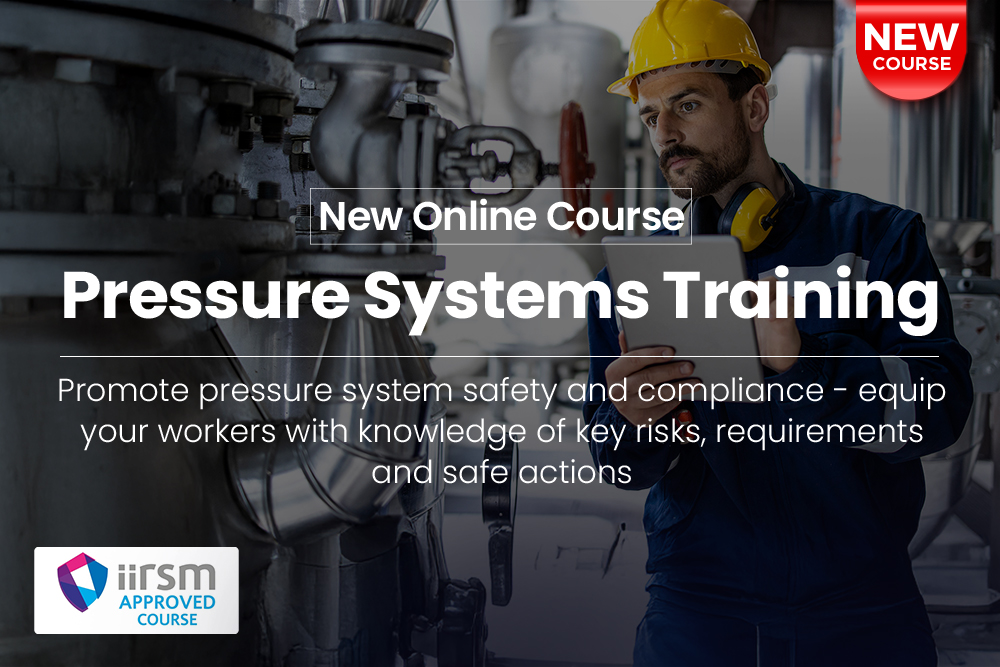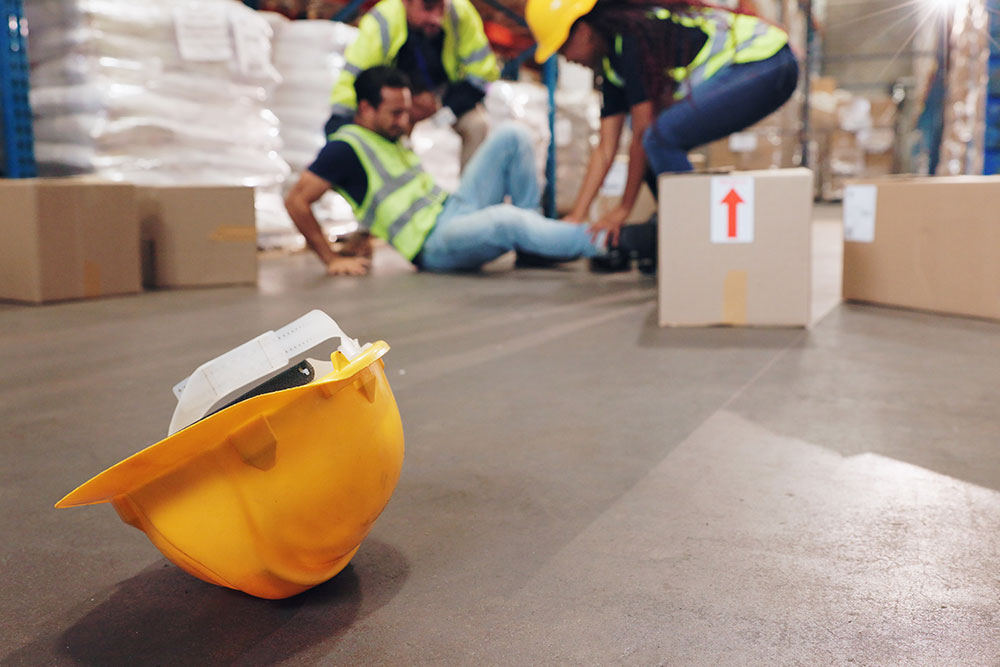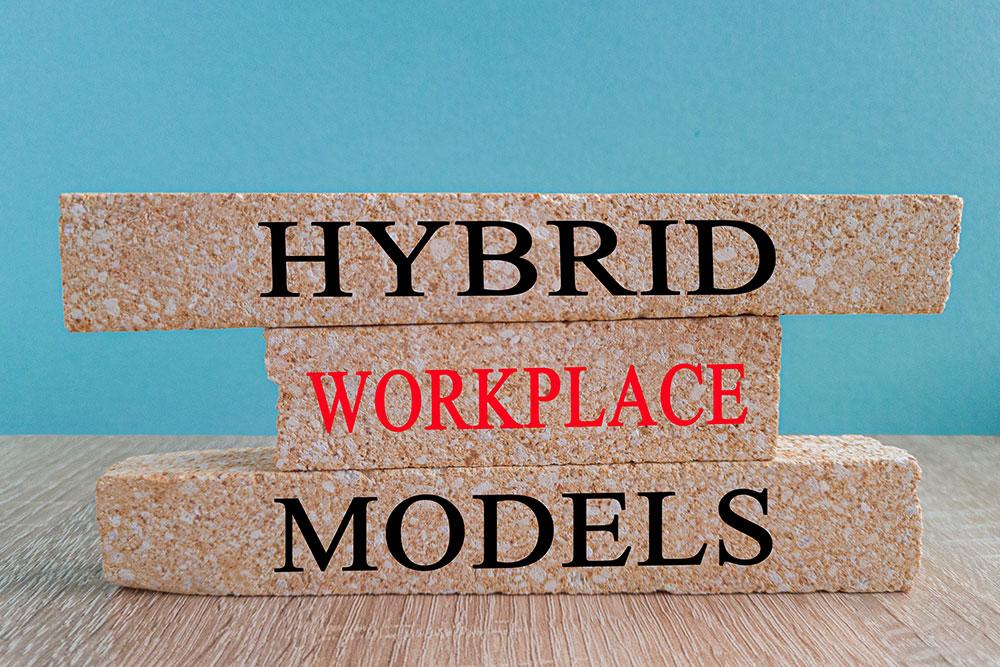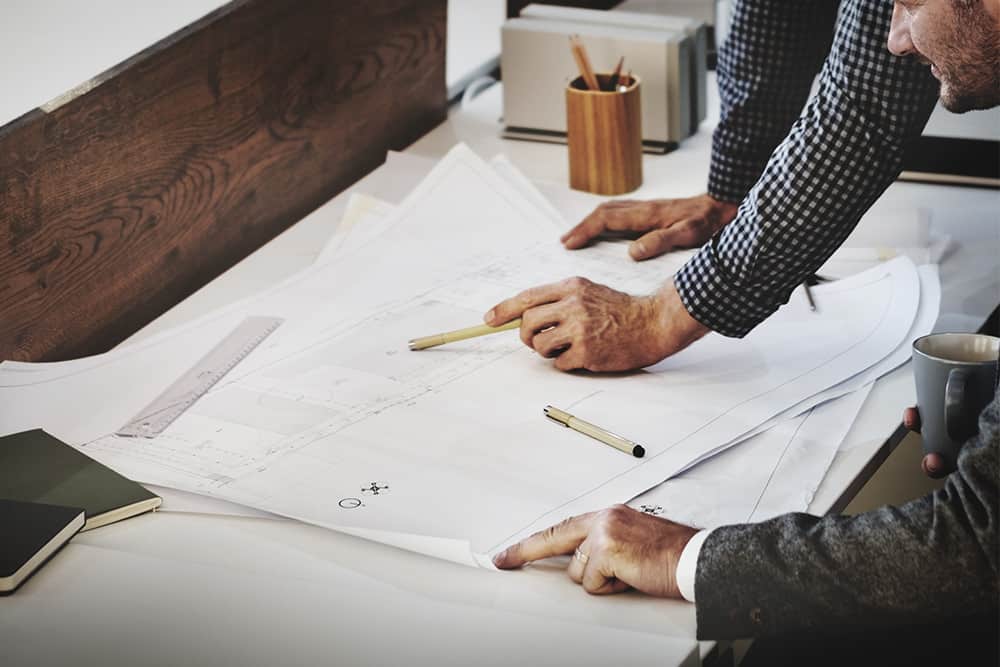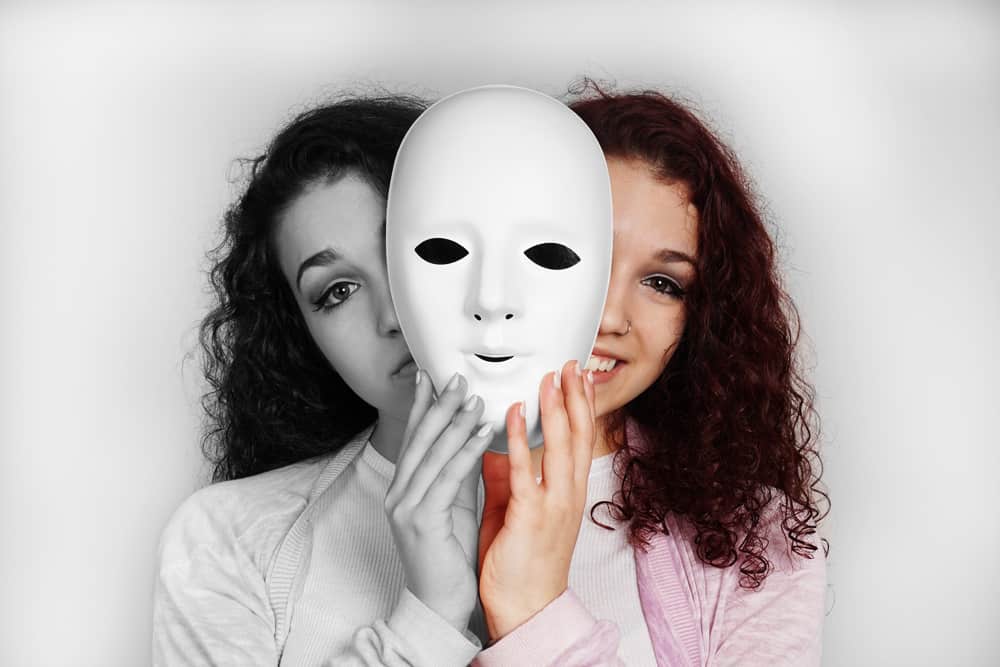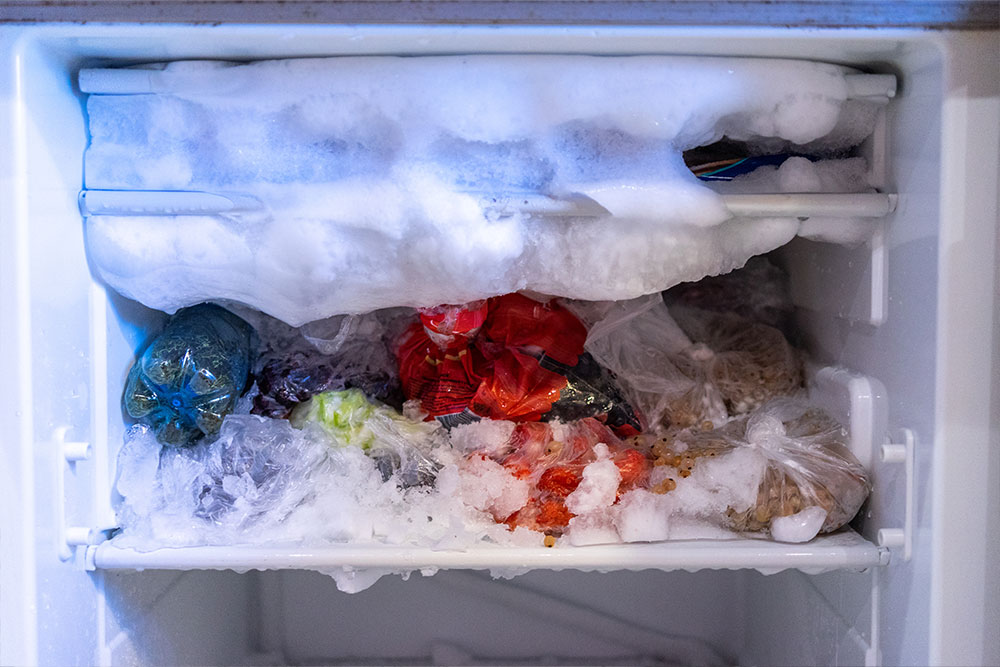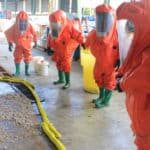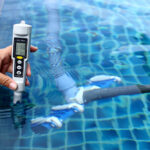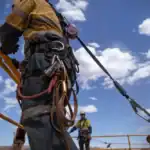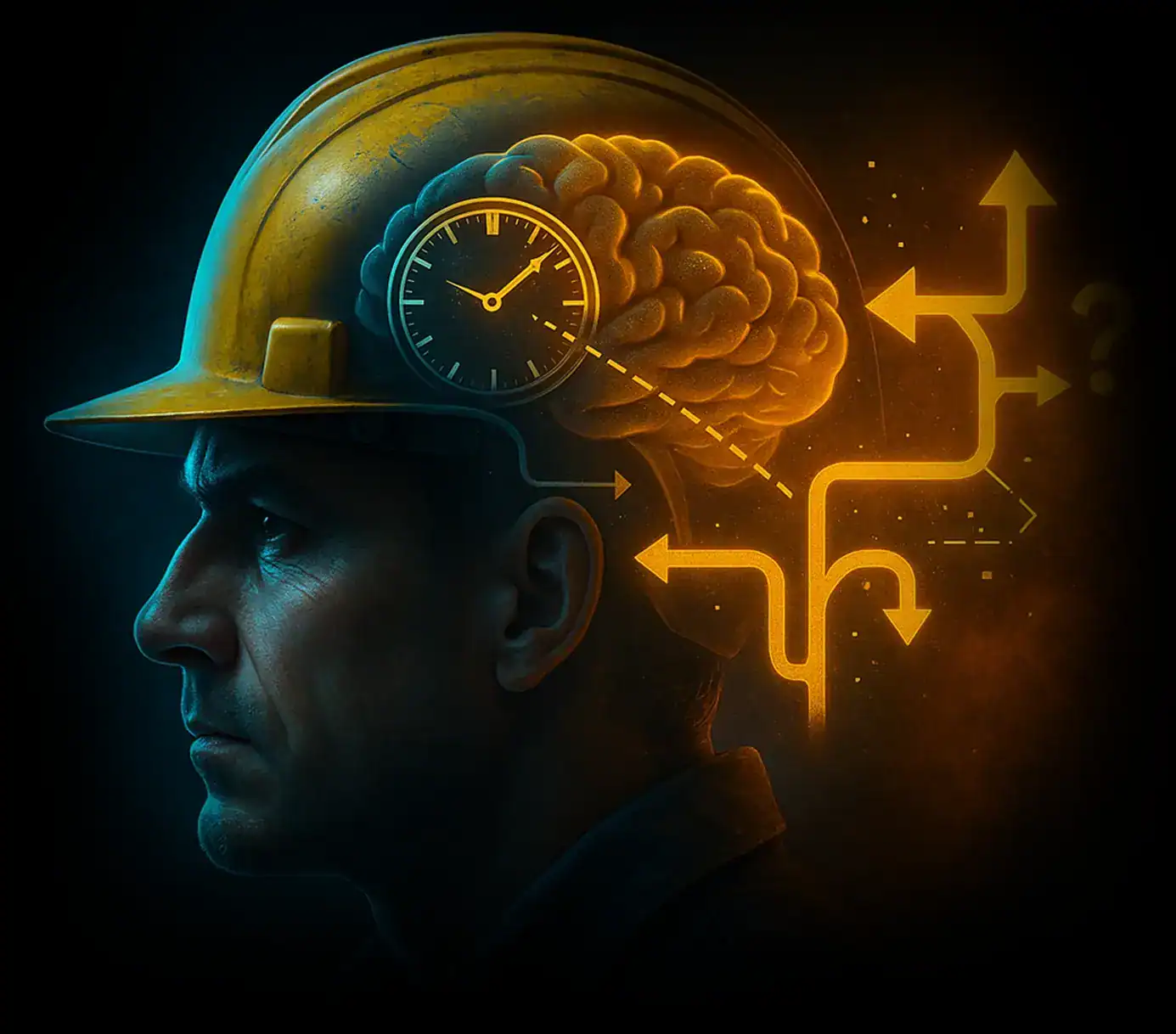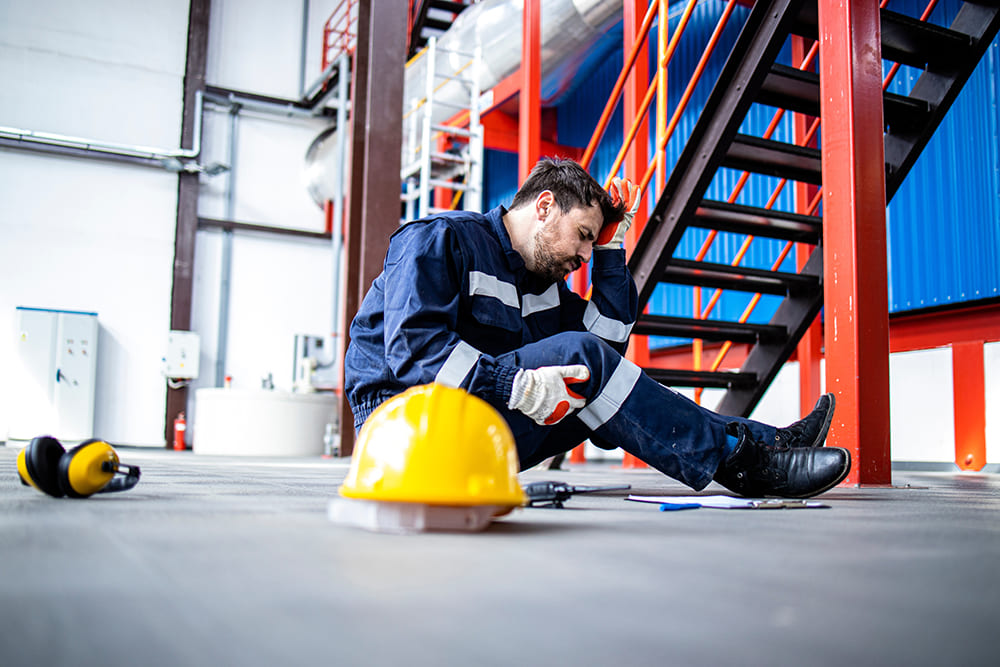
When we think about workplace injuries, we often picture accidents involving heavy lifting or dangerous machinery. But in reality, the most common cause of non-fatal work-related injuries in the UK is much simpler and present everywhere.
So, what is the biggest cause of workplace injury?
It’s slips, trips and falls on the same level.
In this blog, we’ll explore why these incidents happen so often and what you can do to prevent them in your workplace.
Key Takeaways: What Is the Biggest Cause of Workplace Injury?
- Slips, trips and falls on the same level are the most common cause of injury at work.
- In the most recent annual statistics on serious workplace accidents, they accounted for 31% of all non-fatal injuries.
- These incidents happen in all types of workplaces, not just high-risk environments.
- Wet floors, poor lighting and cluttered walkways are common contributing factors.
- As an employer, you are legally required to assess health and safety risks and take action to mitigate them
What Is the Biggest Cause of Workplace Injury in the UK?
According to the Health and Safety Executive (HSE), slips, trips and falls on the same level were the most common cause of non-fatal workplace injuries in the UK in 2023/24.
These incidents accounted for 31% of all non-fatal injuries reported under the Reporting of Injuries, Diseases and Dangerous Occurrences Regulations (RIDDOR). This works out to 19,117 injuries caused by a slip or trip on the same level.
However, RIDDOR only counts serious incidents that meet specific reporting criteria. Many minor injuries go unreported through this system.
For a broader view, the Labour Force Survey (LFS) collects self-reported data from workers, including less severe incidents that may never be formally reported. In 2023/24, the LFS estimated that around 604,000 workers suffered a non-fatal injury.
Of these, approximately 124,000 cases (around 22%) were caused by slips, trips and falls on the same level.
What Are Slips, Trips and Falls?
Slips and trips are similar but distinct:
- A slip happens when there isn’t enough friction between a person’s footwear and the walking surface. This is often caused by wet, oily or polished floors.
- A trip occurs when the foot strikes an object or an uneven surface, causing the person to lose balance.
Both of these incidents can cause a fall, which describes when someone hits the ground after losing their balance.
Slips, trips and falls on the same level are the biggest cause of work-related injuries.
Falls from height are recorded separately. These incidents are less common (and typically much more severe) because they involve ladders, scaffolding or other raised working platforms.
What About Slips and Trips on Stairs?
When someone slips or trips on stairs, it still counts as a fall on the same level, not as a fall from height.
Why Are Slips, Trips and Falls So Common?
Slips and trips happen in every workplace – from offices and warehouses to kitchens, shops and construction sites.
Part of the problem is that the risk exists everywhere. The potential to fall is so familiar that most people stop thinking about it.
We move through familiar environments on autopilot, often without noticing the hazards around us, such as:
- Wet or oily floors from spills, cleaning or bad weather
- Loose mats or rugs that shift underfoot
- Uneven or damaged flooring
- Poor lighting that hides hazards
- Cables, boxes or clutter left in walkways
Because these hazards are so common – and so easy to overlook – slips, trips and falls remain the leading cause of non-fatal injuries at work across nearly every industry.
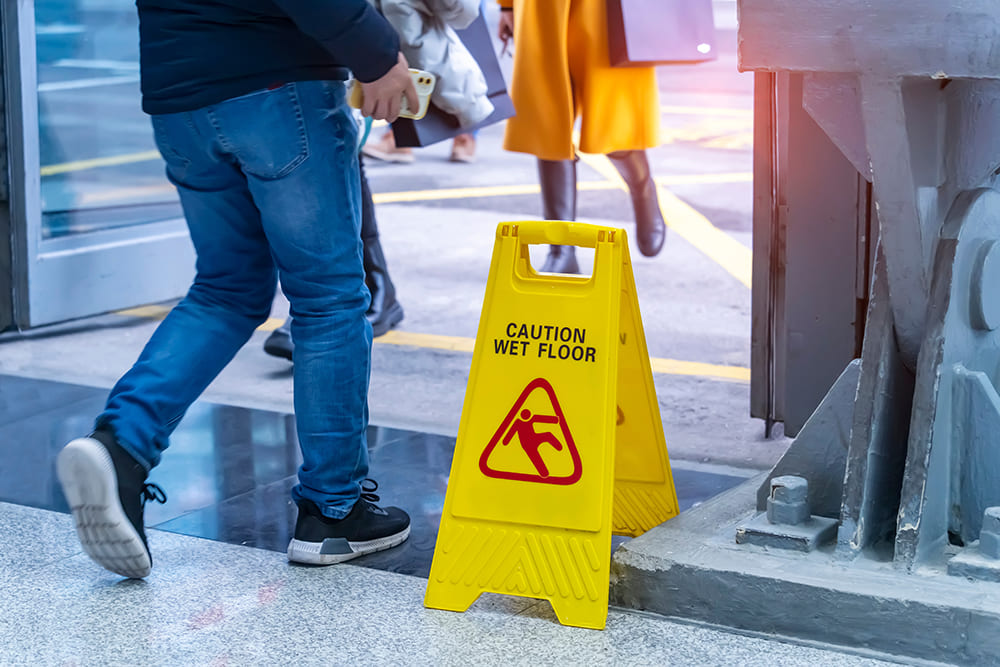
How Slips and Trips Happen: The HSE Potential Models
The HSE provides two simple models to help you understand how slips and trips might happen in your workplace.
These models make it easier to identify risk factors and take effective action before someone gets injured.
The Trip Potential Triangle
The HSE’s Trip Potential Model identifies three key factors that contribute to trip incidents:
- Walkways – Are they clearly defined, well-lit and free from unexpected level changes or poor design?
- Housekeeping – Are floors kept clear of obstacles such as boxes, cables or rubbish?
- Design and Maintenance – Are walking surfaces even, with no loose tiles, worn carpets or broken paving?
Trips typically happen when all three elements are poorly managed.
For example, a cluttered walkway with uneven flooring and poor lighting creates ideal conditions for someone to trip and fall. Improving even one of these factors will significantly reduce the overall risk, although you’re expected to address every known hazard.
The Slip Potential Model
The HSE’s Slip Potential Model outlines five interacting factors that affect the likelihood of a slip:
- Contamination (aka spills) – Water, oil, dust or other substances that reduce surface grip
- Footwear – The grip, tread and suitability of shoes for the environment
- Flooring – The slip resistance and condition of the floor surface
- Cleaning – How and when floors are cleaned, and whether cleaning itself introduces risk
- Environment – Lighting, glare, layout and visual distractions that make it hard to see
Slips become more likely when multiple factors line up. For example, a polished floor that has just been mopped, combined with poor lighting and unsuitable footwear, creates a high-risk scenario.
How to Prevent Slips, Trips and Falls
The HSE’s guide INDG225 sets out practical steps employers can take to reduce the risk of slips, trips and falls in the workplace.
Most incidents are avoidable through basic, low-cost housekeeping.
1. Keep Floors Clean and Dry
Clean up spills as soon as they happen. Use the right cleaning methods and equipment for your floor type. If a floor is wet, use clear warning signs and restrict access until it’s dry.
2. Maintain Clear Walkways
Walkways and working areas should be free from obstructions. Cables, boxes, tools and rubbish must not be left in walkways. Provide proper storage and make tidiness routine.
3. Choose the Right Flooring
Floors should be suitable for the type of work being done. For example, in areas where spills are likely, use slip-resistant flooring.
Damaged or uneven surfaces should be repaired promptly.
4. Manage External Areas
Paths, entrances and car parks can be hazardous in wet or icy conditions. Use mats at entrances, grit in winter and repair uneven or crumbling steps and walkways.
5. Improve Lighting
Good lighting helps people see potential hazards. Replace broken bulbs quickly and ensure that walkways, stairs and entrances are well-lit.
6. Select Suitable Footwear
Provide or require footwear that suits the environment, especially in wet, oily or outdoor areas. Footwear should offer a good grip and fit well.
7. Review Regularly
Conduct regular inspections of your workplace. Walk through areas and check floors, lighting, walkways and external routes. Use risk assessments to record hazards and how they’re being managed.
8. Train Staff
Staff should be trained to spot and avoid slip and trip hazards. This includes reporting problems and keeping areas tidy, thereby making them safer.
Your Legal Duties as an Employer
Employers have a legal responsibility to protect the health and safety of everyone affected by their work activities, including employees, contractors and visitors.
The Health and Safety at Work etc. Act 1974 creates this overarching duty. It requires employers to ensure, so far as is reasonably practicable, the health, safety and welfare of their employees.
Building on this, the Management of Health and Safety at Work Regulations 1999 require employers to carry out suitable risk assessments and take appropriate action to control any identified risks, including the risk of slips, trips and falls.
The Workplace (Health, Safety and Welfare) Regulations 1992 set more specific requirements for the condition of the workplace. These regulations require employers to:
- Keep floors and traffic routes clean and safe
- Provide appropriate lighting
- Ensure the layout of the workplace does not create unnecessary risk
Failing to meet these legal duties can result in enforcement action, prosecution and financial penalties. More importantly, non-compliance increases the risk of people getting hurt.
Help Your Team Take Slips and Trips Seriously
Because slips and trips are so familiar, many workers underestimate the risk. But they remain the leading cause of workplace injury – and the consequences can be severe. Sprains, fractures and long-term musculoskeletal issues are all common outcomes (like the almost 20,000 major slip and trip injuries reported under RIDDOR).
Our Slips, Trips and Falls Training course helps change that mindset. It shows workers how everyday hazards can lead to serious harm, and what they can do to prevent it.
A small investment in targeted training now will help you manage the most common cause of workplace injury.

